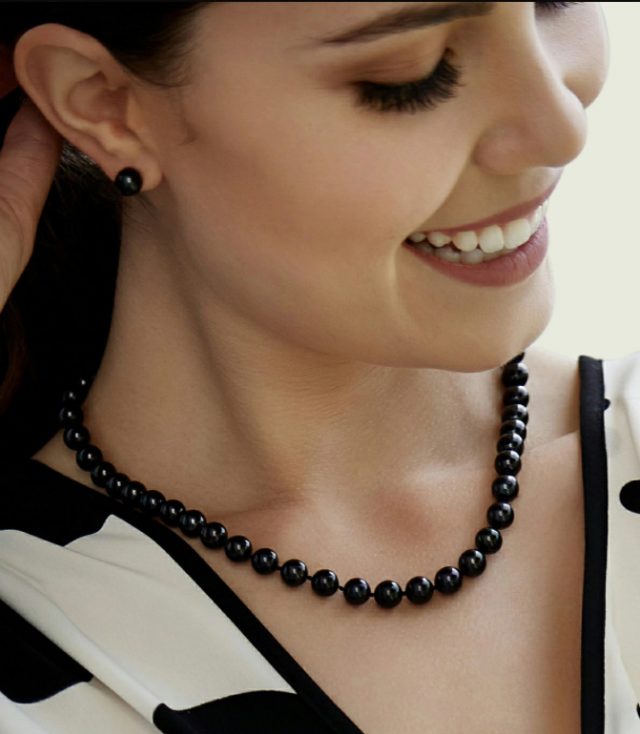Efficient Christmas Shopping: The 2024 Ultimate Guide


When it comes to Christmas shopping, being prepared is half the victory. And that often means embarking on the fun spree way ahead of time. Our motto: start prepping in August, so you can relax in December. After all, you’ll have cookies to tend to, Christmas decorations to install, ginger bread houses to build and trees to decorate during the highly-anticipated festive month.
Starting Christmas shopping early on – more precisely, gift shopping – brings with the widest range of pros. First off, you’ll be saving money. Secondly, you’ll be avoiding lots of stress. And hassle. And that oh so common last minute panic. Whether you’re struggling with picking the best gifts for grandma, shopping for the kids or staying on budget, we’ve got you covered. So get your lists going and read on to find out the best tips out there for the most efficient, successful and stress-free Christmas shopping ever.

Great planning always starts with a list. But what should your Christmas shopping list entail? And who should be on it? How should you plan out your budget and make sure December won’t catch you with empty pockets? Here is a simple plan of attack in 3 easy steps.
Download out Christmas Shopping List below for FREE! Start filling it in and write down the names of the people you must buy a gift for, all the way down to the people you would like to buy something for, but isn’t mandatory. This way, you can decide later whether your budget allows you to shop for the extra gifts. Alternatively, if you prefer to have everything on your phone, use apps like Santa’s Bag, that allow you to keep track of all your Christmas spending.
Write down what gift you would like to buy for each family member or friend and the approximate cost of your future purchase. This way, you will avoid unpleasant surprises later. Sister has been dreaming of a funky necklace featuring pink gemstones? Add it to the list! Best grill set for dad is in the plan? Write it down. Splurge more on the priority people on top of your list.
Research the best prices and places to shop for your gifts, in order of importance. Decide on the best places to shop only after you invest a bit of time in comparison shopping (more on that later in our article).
FUN FACT: According to studies by CensusWide, almost 50% of US women would love to receive jewelry for Christmas. Weekend getaways, holidays and vouchers were other popular preferences.

From shopping for gifts to Christmas outfit ideas, you can’t beat the charm of classic White Pearls. Treat yourself to one of our stunning single pearl necklaces, or shop all types of earrings for your loved ones.
Plus, browse our collection of Pearl Necklaces, and you can customize every detail! From the pearl overtone to the necklace length, this Christmas will be extra special with pearls. BONUS TIP: don’t miss our clearance specials!

The average American family spends close to $1000 on gifts each Christmas – and the predictions for Christmas 2023 are even higher. Fact is, a large part of this budget goes to the kids’ presents – some of which will end up at the back of a drawer by January – or, worse, in a landfill. With the recent rise of the sustainability movement in all areas from slow fashion to other goods, unnecessary waste is definitely one thing you want to avoid.
The pressure is real. And as you’ve learned from previous years, shopping for your little ones for Christmas can easily get overwhelming. Which is why, once again, the secret lies in making a list – and checking it twice! After all, if it works for Santa, it should work for you too.
Something they WANT • Something they NEED
Something they WEAR • Something they READ
Some call it ‘minimalistic’, some call it ‘basic’ – but the truth is, the magical rule of 4 works wonders. It prevents greediness, it prevents clutter in your home and it sets reasonable expectations. Basically, the goal is to buy a total of 4 gifts – meaning one present for each one of the following categories: Want, Need, Wear and Read. Let your children know about the 4 gifts rule before Christmas – this way, they know how much to expect – but not what to expect, which does not take away the element of surprise.
Toys, games and new pets are favorites here. Give your kids the option of sending a letter to Santa in order to let you know exactly what their dream gift is. Use our FREE template at the end of the article, print it out and let your littles do the rest. This is the only category where the children pick out the Christmas present themselves. It’s their main gift or ‘the big gift’ and takes the largest portion of the budget – unless your little one wants something really inexpensive, in which case, luck is on your side.
From school supplies to things they need for extracurricular activities or hobbies, there are lots of Christmas shopping opportunities here. For a baby or a toddler, the ‘need’ could be starting a 529 college savings plan.
Books, comic books and magazines for the win!
Clothes, shoes and accessories. Socks and underwear are better suited as stocking fillers, while more valuable items (like that new pair of sneakers your 5th grader has been dreaming of) account for the WEAR category.
If you can afford to go a little extra, here are 3 more additions the kids would love:
Don’t forget the Christmas stocking fillers! Opt for smaller toys, slime, crayons, hair accessories and the likes in order to fill up the stockings.
TIP: Save money on Christmas shopping by stuffing the Christmas stockings with Christmas themed coloring pages. Download our Freebies pack at the end of the article and find a set of 5 festive coloring pages for your little ones!

Save money each month in a Christmas 2023 fund. One of the best options is a Christmas Club Account. Having plenty of cash available in December is unlikely unless you start early and set aside a bit each month. Another option is to do your gift shopping throughout the year, buying a present or two each month. You shouldn’t be able to transfer your funds back and forth – that would defeat the purpose.
FUN FACT: 21.5% of Americans and 10 Europeans go into debt because of Christmas (Capital Counselor).
Apps like Ibotta or Rakuten will help you achieve your money goals. You want to make sure that you are getting the best value products out there – and that you use any coupons available online. Sign up, log into the app and then search for your desired store. Once you purchase your items, a percentage of your spending is rebated back to you.
Coupons are great help, but you can take it to the next level. Before heading out for your shopping spree, make sure to check out GiftDeals in search for discounted gift cards. If you’re getting digital gift cards, you can easily print them out to offer them as a gift.
You got them for a reason and that’s because they pay off. Literally so. Check out your loyalty cards to see how many loyalty points you have accumulated – and use them on your holiday shopping. If you don’t have a loyalty card, get one ahead and collect points until the holidays.
Here’s a trick that often works: abandon your shopping cart! Failing to complete your order will make companies want to tease you to get back. And the way they do that: by offering you discounts. Some of the companies that get back to you with discount coupons: Asos and Tesco. This is a good saving tip in general, regardless if you’re shopping for birthday gifts for wife or for a bridesmaid proposal.
Yes, you can totally do that – just by shopping! Use apps like Fetch and upload your receipts in order to earn points. After a few months (or faster, depending on your shopping habits), you’ll have enough in order to qualify for a free gift card, which you can later gift at Christmas.
There’s a quick way to do this and it can save you big bucks – we’re talking 20% from your purchase or more. Visit websites like CouponFollow and RetailMeNot.com and find all the available discounts for the store you intend to shop in. Alternatively, you can take the old-school route and find coupons in the Sunday newspaper or flyers.
Another tool to help you get the best of coupons is Honey. All you need to do is install the browser extension and it alerts you on the current offers whenever you visit a website – this includes discount codes and rewards like gift cards.
Use tools like Keepa in order to track Amazon prices. This way, you can catch the best prices in real time – as you get email notifications when an item’s price drops.
And how to do that exactly? Simple: use Google Shopping. First, search for a product. Next, use the available filters on the left side that list your products based on price or retailer. Once you select the item, you can click on ‘compare prices’, leading you to the full list of retailers selling the product. Sort out the results as you wish, either by total price or base price (with or without shipping).
FUN FACT: 20% of people buy Christmas presents for their pets.
Not sure what to buy for your three nieces? Thinking about the costs alone can give you a headache. Solution: opt for a combined, larger gift. For example: a doll house. Video games, board games and outdoor toys also make great examples of shared gifts the little ones can enjoy together.
You can shop in a similar manner for adults as well. For example, gift a couple a bedding set or other home décor items instead of opting for two separate gifts. Alternatively, you can opt for gifting tickets, an experience or a subscription package.
Going with a theme for all your Christmas shopping (or at least for the majority) is a great way to save money. Firstly, you’ll be saving time and as we all know, time is money. You’ll also spend less on gas and on impulse shopping – since you’ll just be visiting one store. Plus, you can find lots of great (‘buy 2, get 3’) deals if you are shopping for books or board games.
You can choose to leave the priority people out of the theme and just include your friends or coworkers. Doing this will allow you to spend more on your close family members or just save money in general – not to mention the hassle of coming up with new gift ideas for everyone.
And DIY your gifts! Everyone’s Christmas list includes a few people who would love to get something personalized or created by your own two hands. Whether that’s grandma who collects ceramic bowls, your cool hippie aunt who loves handmade jewelry or your cousin who would love a new scarf to pair up with her office outfits, find those people and make them something meaningful instead of shopping for the new shiny thing. Involve the kids in the process – that will surely be a hit with nana!
Are your baking skills British Bake-off worthy? Is everyone raving about your chocolate chip cookies? Then you know what to do. From gingerbread cookies to cakes, there are lots of treats out there your family, friends and coworkers would be glad to receive.
One of the best gifts you can give new parents costs no money at all – simply gift them the gift of free babysitting, paired with a handmade babysitting coupon they can used whenever they want. Skilled at paining walls, nail art, drawing portraits? Offer your free services.
Often times, a picture is worth a thousand words. Whether you decide to frame a family pic for grandma or gift a special photo representing a dear memory to your high-school friend, gifting pictures to your loved ones is a very inexpensive way to show you care.
You’ve been waiting for the right moment to gift your offspring that sentimental piece of jewelry that used to belong to your grandma. Whether that’s a pearl bracelet or an engagement ring, Christmas 2023 is the perfect time to do it – especially if you are trying to keep your expenses low.
FUN FACT: Only 14% of people buy Christmas presents for their coworkers.

Gorgeous, real pearls don’t have to be expensive. If you want to gift your loved one something truly special and timelessly elegant, yet without having to spend a fortune, opt for the classic beauty of Freshwater Pearls.
With their discreet glow and unmistakable charm, Freshwater pearl necklaces, pearl rings, dangle pearl earrings and pearl bracelets make stunning additions to your Christmas outfits. Classic round gems or mesmerizing baroque pearls – your pick! The world is your oyster.

Not tempted to spend weeks on the hunt for Christmas presents? We can’t blame you. Fact is, women spend 20 hours, on average, shopping for Christmas presents. If you are all about maximum efficiency and having the best experience when it comes to holiday prepping, then this next method was designed for you. Is completing Christmas shopping for gifts in one single day doable? Here’s the good news: YES! Read on to find out just what to do.
Whether you decide to purchase a Christmas planner, create the template yourself or download our FREE worksheet below, the verdict is clear: a successful shopping spree always needs a list.
A blend between comfortable and chic is best. Fact is, we are all more productive when we look more put together. You’ll be passing many mirrors when shopping for Christmas gifts, and you need all the motivation to keep going – and looking frumpy will make you want to quit early.
This is a major factor for success. Fact is, going shopping with others will lead to you making unnecessary purchases. We aren’t immune when a friend makes a remark similar to ‘oh, this would look great on you!’ or ‘you should totally get that!’. Not only will shopping alone save you money, but also lots of time. And since your goal is to complete your shopping in one day, going solo is a must.
Wandering in the store won’t help when you’re on a mission to complete your Christmas shopping in one day. Being distracted by the sales near the register won’t help either. Keep your focus on your list – and your list alone – in order to avoid overspending and wasting time.
Using cash only is definitely preferable, yet not possible for all of us. In order to make sure you have enough cash available for Christmas, start saving as early as possible. Why use cash-only: because taking your card on the shopping spree is far more likely to lead to unnecessary spending. Since you already know how much each item costs thanks to planning ahead and creating your list, you can take the exact amount of cash (with an extra 10% for unpredictable situations) with you and avoid all extra temptations.
Visiting 7 shopping centers and 2 outlet stores in the same day is definitely not doable, which is why, in this case, being restrictive works in your favor. Once you’ve created your shopping list, you can then decide which mall is best suitable to help you tick those boxes as fast as possible.
Even if you are visiting just two shopping malls, mapping out the fastest routes will save you time. Write down the order in which you plan to visit each location and what you plan on purchasing in each store on your list.
In other words, pay for the goods at the less popular registers, such as the ones at the men’s section or other departments that aren’t as busy. This will save you previous time.
Tip: For top notch efficiency, pick a theme for the majority (or all) your Christmas presents. Themes can range from books to board games and from home décor to clothes – the choice is yours. Sticking to a theme will save you a lot of time and effort and you will visit less shops in the process.
FACT: The average shopper spends over $100 on themselves while shopping for Christmas gifts.

No less than 46% of all holiday shopping happens online (Source). Ready to ditch the long lines and do all your shopping with the help of a few clicks? The good news: it’s totally doable! Check out the tips below in order and enjoy a successful online shopping spree!
FACT: The busiest shopping day of the year used to be Black Friday – but these days, it’s the Saturday before Christmas.
FACT: UPS ships over 600 million packages each holiday season.

For the loved ones in your life, always shop from reputable online retailers. This Christmas, offer the women in your life the ideal present: timeless chicness with a classic pair of Pearl Earrings from The Pearl Source.
Whether you love the discreet charm of Freshwater Pearls, adore the lustrous Akoya gems or are intrigued by black gemstones like Tahitian Pearls, our collections offer something special for everyone. Find her dream pearls and celebrate Christmas 2023 in style!

We’ve talked a lot about what To Do. How about what NOT To Do when in the midst of holiday shopping? From procrastinating to falling for fake bargains, there’s lots of things to avoid when shopping for the best Christmas gifts out there.
FACT: According to studies, 45% of shoppers plan on doing their Christmas shopping at the grocery store.
FACT: According to CensusWide, 46% of people have lied about liking a Christmas gift.

When embarked on a Christmas shopping spree, you’re bound to encounter a few difficulties along the way. From shopping for impossible-to-shop-for people to running out of gift ideas, we’re tackling the most common range of problems below and offering you simple and hassle-free solutions.
| PROBLEM | SOLUTION |
| Your gift did not arrive in time for Christmas. | Print out a photo of the gift, wrap it up nicely and place it under the tree, with a card specifying that the gift is in transit. |
| You are shopping for a difficult person and nothing you see in stores feels like the right fit. | Donate in their name. Pick a cause close to their heart, be it health or animals-related and make a donation. |
| You simply have run out of good gift ideas. | Buy a nice version of something that is normally basic. A good example: elevated hand towels, socks (upgrade them to luxurious socks) or a pashmina (cashmere being the obvious upgrade). |
| Feeling overwhelmed while doing Christmas shopping. | Take the fastest route out by opting for Gift Cards. According to a CensusWide study, 32% men and 42% of women prefer receiving vouchers for Christmas. |
| You’re worried the receiver won’t appreciate the gift. | Opt for classics. You simply can’t go wrong when gifting timeless pieces such as silver frames, cashmere sweaters or diamond and pearl jewelry – the kind of gifts everyone appreciates. |
It isn’t easy to find the perfect present. But the safest way to go is to avoid draining your wallet during last-minute panic buys by making a plan and sticking with it. What are you doing this Christmas to help you keep organized and efficient? Share your tips with us in the comment section!
Get in the holiday spirit by downloading our free Christmas Shopping printables below! What you’ll find inside: Christmas Shopping Worksheet, Christmas Budget Worksheet, Letter to Santa Template and Festive Coloring Pages for the little ones!

Almost 50% of women would love to receive jewelry for Christmas – whether adorned by gemstones, lustrous pearls or twinkling diamonds. Browse our premium Akoya Pearls collection, featuring beautiful pearl jewelry including necklaces, earrings, pearl pendants and rings at the best prices online.
Find the perfect present in our collections, discover the unmatched beauty and timeless charm of Akoya Pearls and gift a memorable gift this Christmas.
Signup now and receive an email once I publish new content.

Content Writer and Editor at The Pearl Source
Carla Jonas is a content writer and editor at leading pearl retailer The Pearl Source. Passionate about everything jewelry, décor and fashion-related, Carla is ready to bring you the latest on what to wear, hot trends, style tips and more.
 The Best 2024 Gifts for Parents Guide
The Best 2024 Gifts for Parents Guide
 15 Valentine’s Day Outfits for a Romantic & Chic Celebration
15 Valentine’s Day Outfits for a Romantic & Chic Celebration